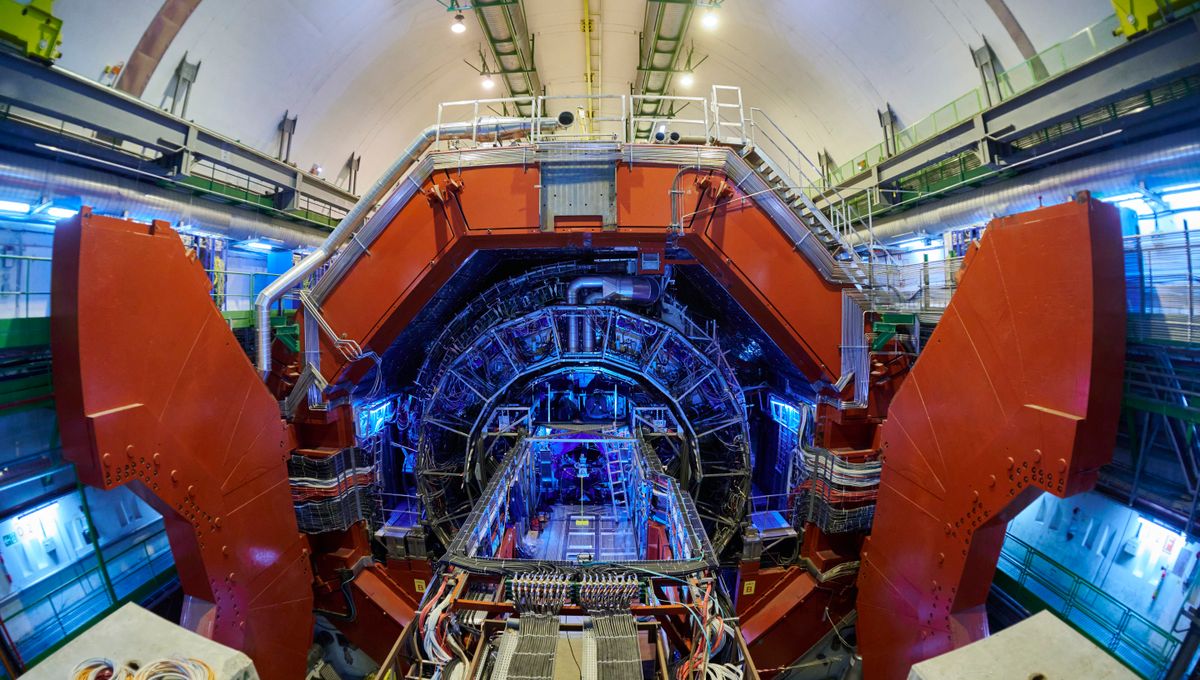
The ALICE experiment of the Large Hadron Collider (LHC) looks at what happens when heavy ions smash together. Mostly, it is to understand the quark-gluon plasma that existed in the first moments after the Big Bang. But smashing lead ions together can break those atoms into more commonly recognizable forms, such as the conversion of lead to gold.
This is no alchemy transmutation of lead into gold, but nuclear transmutation. Lead is made of 82 protons and around 126 neutrons at its core. Gold instead has 79 protons, just three fewer than lead. Removing three protons from each lead atom is what is needed to make this transmutation.
It is not the scope of the LHC, but by smashing lead atoms at 99.999993 percent of the speed of light, you can get some interesting products. Not all atoms will smash into another, so there will be floating lead ions that continue to speed around the accelerator. It is possible that the strong electromagnetic field in the LHC can create brief but powerful pulses of light, and it is those pulses that can rip those three protons from the lead and turn it into gold. What’s really exciting is that the process can be observed.
“It is impressive to see that our detectors can handle head-on collisions producing thousands of particles, while also being sensitive to collisions where only a few particles are produced at a time, enabling the study of rare electromagnetic ‘nuclear transmutation’ processes,” Marco Van Leeuwen, ALICE spokesperson, said in a statement.
It is not just gold. The team used the detector’s zero degree calorimeters (ZDC) to measure the interactions between the high-energy light and the nucleus of lead ions. They wanted to see the emission of zero, one, two, and three protons, accompanied by the loss of a neutron. They found that the interactions created lead with fewer neutrons, but also thallium, mercury, and gold.
Gold happens less frequently, but every collision still produces 89,000 gold nuclei per second out of the 174 billion lead atoms in the beam. But there will be no gold rush at CERN. The quantity is a minuscule fraction of a gram, but also ends up slammed at high energy on the sides of the accelerator, where the gold atoms break apart.
“Thanks to the unique capabilities of the ALICE ZDCs, the present analysis is the first to systematically detect and analyse the signature of gold production at the LHC experimentally,” explained Uliana Dmitrieva of the ALICE collaboration.
“The results also test and improve theoretical models of electromagnetic dissociation which, beyond their intrinsic physics interest, are used to understand and predict beam losses that are a major limit on the performance of the LHC and future colliders,” added John Jowett, also of the ALICE collaboration.
Deatails of the work are published in Physical Review C.
Source Link: “Alchemy” In Action As CERN Detects Lead Atoms Turning Into Gold